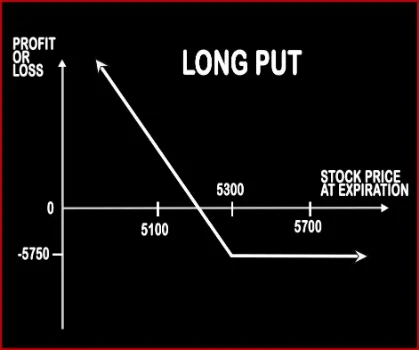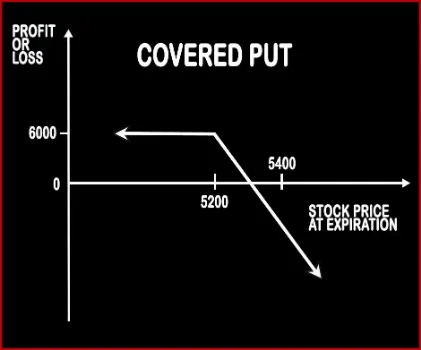Compare Strategies
| LONG PUT | COVERED PUT | |
|---|---|---|

|

|
|
| About Strategy |
Long Put Option StrategyThis strategy is implemented by buying 1 Put Option i.e. a single position, when the person is bearish on the market and expects the market to move downwards in the near future. |
Covered Put Option StrategyThis strategy is exactly opposite to Covered Call Strategy. Here the investor is neutral or moderately bearish in nature and wants to take advantage of the price fall in the near future. The trader will short one lot of stock future. Now the trader will short ATM Put Option, the option strike price will be his exit price. If the prices rally above the strike price, the .. |
LONG PUT Vs COVERED PUT - Details
| LONG PUT | COVERED PUT | |
|---|---|---|
| Market View | Bearish | Bearish |
| Type (CE/PE) | PE (Put Option) | PE (Put Option) + Underlying |
| Number Of Positions | 1 | 2 |
| Strategy Level | Beginners | Advance |
| Reward Profile | Unlimited | Limited |
| Risk Profile | Limited | Unlimited |
| Breakeven Point | Strike Price of Long Put - Premium Paid | Futures Price + Premium Received |
LONG PUT Vs COVERED PUT - When & How to use ?
| LONG PUT | COVERED PUT | |
|---|---|---|
| Market View | Bearish | Bearish |
| When to use? | A long put option strategy works well when you're expecting the underlying asset to sharply decline or be volatile in near future. | The Covered Put works well when the market is moderately Bearish. |
| Action | Buy Put Option | Sell Underlying Sell OTM Put Option |
| Breakeven Point | Strike Price of Long Put - Premium Paid | Futures Price + Premium Received |
LONG PUT Vs COVERED PUT - Risk & Reward
| LONG PUT | COVERED PUT | |
|---|---|---|
| Maximum Profit Scenario | Profit = Strike Price of Long Put - Premium Paid | The profit happens when the price of the underlying moves above strike price of Short Put. |
| Maximum Loss Scenario | Max Loss = Premium Paid + Commissions Paid | Price of Underlying - Sale Price of Underlying - Premium Received |
| Risk | Limited | Unlimited |
| Reward | Unlimited | Limited |
LONG PUT Vs COVERED PUT - Strategy Pros & Cons
| LONG PUT | COVERED PUT | |
|---|---|---|
| Similar Strategies | Protective Call, Short Put | Bear Put Spread, Bear Call Spread |
| Disadvantage | • 100% loss if strike price, expiration dates or underlying stocks are badly chosen. • Time decay. | • Limited profit, unlimited risk. • Trader should have enough experience before using this strategy. |
| Advantages | • Limited risk to the premium paid. • Less capital investment and more profit. • Unlimited profit potential with limited risk. | • Investors can book profit when underlying stock price drop, move sideways or rises by a small amount. • Able to generate monthly income. • Able to generate profit from fall in prices or mild increase in the prices. |